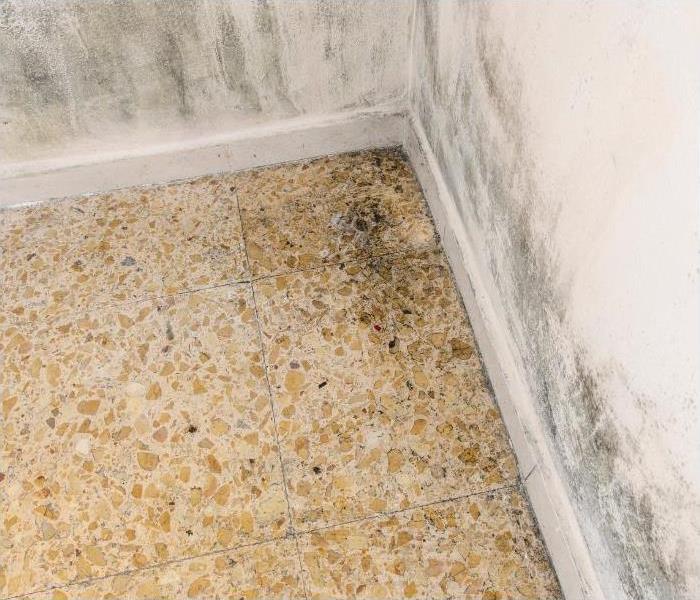Recent Water Damage Posts
Hygrometers: The Unsung Heroes of Water Damage Restoration
5/30/2023 (Permalink)
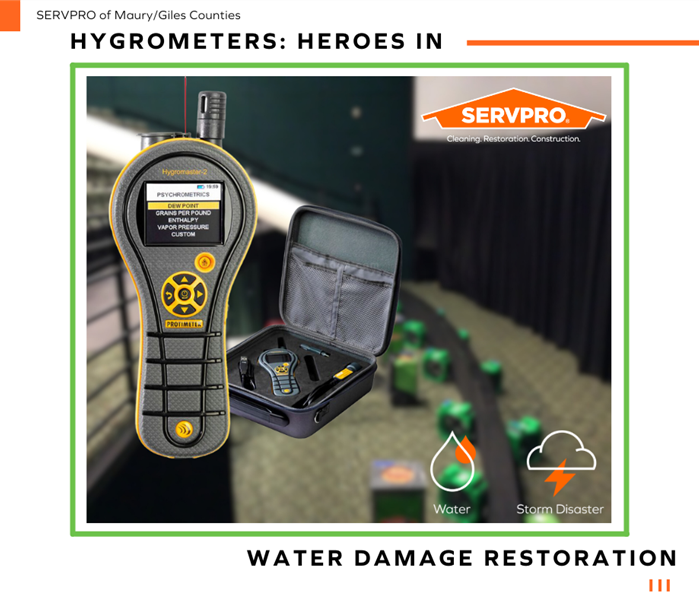 Hygrometers and Protimeters are important tools that our SERVPRO technicians use to restore water damage here in Maury County, TN.
Hygrometers and Protimeters are important tools that our SERVPRO technicians use to restore water damage here in Maury County, TN.
Understanding Hygrometers
Hygrometers are indispensable tools in the world of water damage restoration, yet many people are unfamiliar with how they work. A hygrometer is an instrument designed to measure the amount of moisture, or humidity, in the air. This invaluable tool can help prevent mold formation and other issues related to excess moisture, making it a key component of the water damage restoration process.
The Mechanism Behind Hygrometers
A hygrometer works by detecting changes that are dependent on the level of moisture in the atmosphere. There are different types of hygrometers - mechanical, electrical, and wet and dry bulb - and each has its own mechanism for gauging humidity.
Mechanical hygrometers, for instance, function by using organic materials such as hair or animal gut which expand and contract in response to humidity changes. These movements are then converted into humidity readings.
On the other hand, electrical hygrometers utilize humidity-sensitive capacitors. The humidity in the air changes the capacitance in these components, and these alterations are converted into humidity readings.
The wet and dry bulb hygrometers, also known as psychrometers, employ two thermometers: one dry, the other covered with a wet cloth. Evaporation from the wet cloth cools the thermometer, and the temperature difference between the two bulbs can be used to determine the humidity.
Hygrometers in Water Damage Restoration
In water damage restoration, professional technicians use hygrometers to measure humidity levels and monitor the drying process in water-damaged spaces. By accurately assessing the humidity levels, SERVPRO of Maury/Giles Counties can ensure that the area is thoroughly dried and reached what we call the “Dry Standard”. This is a target moisture level that reduces the risk of mold growth and structural damage from environmental conditions. This is a critical part of our comprehensive water damage repair and restoration services.
Hygrometers: A Tool for Prevention and Mitigation
While hygrometers are crucial in water damage restoration, they're also handy devices for homeowners. Regularly monitoring humidity levels can help maintain a healthy indoor environment and alert homeowners and property owners to potential moisture issues. By catching these issues early, property owners can call in the professionals for water damage prevention measures, potentially saving thousands of dollars in repairs.
Ensuring the Best in Water Damage Restoration
At SERVPRO of Maury/Giles Counties, we understand the significance of a thorough water damage restoration process. Armed with tools like the hygrometer, we ensure your property is properly dried and restored, mitigating any further damage or issues like mold growth.
If you're facing a water damage situation or want a consultation for prevention strategies, reach out to us today. We bring our expertise and advanced tools, including the humble yet powerful hygrometer, to every job, guaranteeing top-quality water damage restoration for all our clients. Call us at (931) 388-4248 or visit our website to get started.
The Benefits of Regular Plumbing Maintenance for Homeowners
4/19/2023 (Permalink)
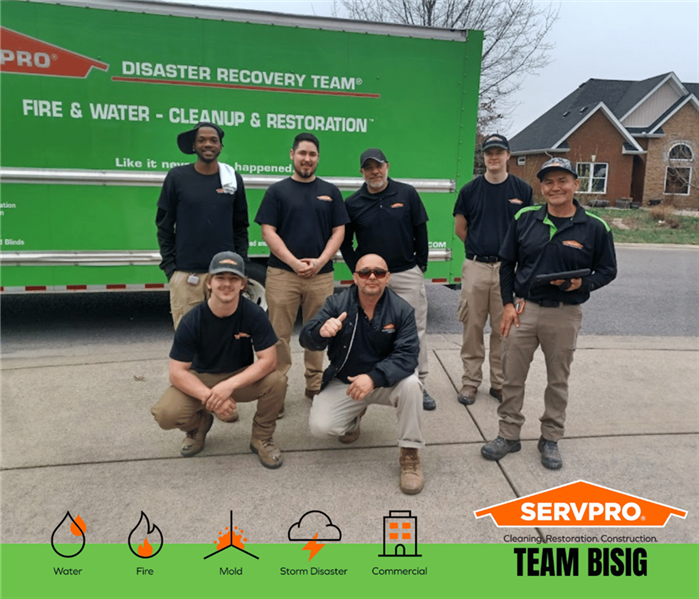 Our SERVPRO water damage restoration team is always here to help. Whether you live in Maury or Giles County, we're available 24/7/365.
Our SERVPRO water damage restoration team is always here to help. Whether you live in Maury or Giles County, we're available 24/7/365.
A well-maintained plumbing system is crucial for the comfort, safety, and functionality of your home. Many homeowners overlook the importance of regular plumbing maintenance, often only addressing issues when they become more severe and costly. In this article, we will discuss the benefits of regular plumbing maintenance for homeowners and why it's essential to prioritize this vital aspect of home care. By staying on top of your plumbing system's needs, you can save money, prevent costly water damage restoration, and ensure the long-term health of your property.
- Prevention of Plumbing Emergencies One of the primary benefits of regular plumbing maintenance is the prevention of plumbing emergencies. Leaks, burst pipes, and other severe issues can cause significant damage to your home and may require professional water damage restoration services. By scheduling routine maintenance with a skilled plumber, you can identify and address potential problems before they escalate, saving you time, money, and stress in the long run.
- Reduction of Water Bills A well-maintained plumbing system operates more efficiently, which can result in lower water bills. Leaks, faulty fixtures, and other issues can all contribute to increased water consumption, leading to higher utility costs. Regular plumbing maintenance allows you to detect and fix these problems, ensuring that your system is operating at peak efficiency and helping you save money on your monthly water bills.
- Extending the Lifespan of Your Plumbing System Investing in regular plumbing maintenance can help extend the lifespan of your plumbing system, preventing the need for costly repairs or replacements. Routine inspections and maintenance can identify issues such as corrosion, wear, and damage, allowing you to address them before they cause more severe problems. By keeping your plumbing system in top condition, you can save money and avoid the need for extensive water damage restoration down the line.
- Improved Water Quality The quality of the water in your home is directly impacted by the health of your plumbing system. Issues such as pipe corrosion, leaks, and bacterial growth can all lead to poor water quality, posing potential health risks to you and your family. Regular plumbing maintenance can help ensure that your plumbing system is clean and functioning correctly, providing you with clean, safe water for your everyday needs.
- Increased Home Value A well-maintained plumbing system can contribute to your home's overall value. Potential buyers are more likely to be interested in a property with a well-maintained plumbing system, knowing that they won't need to invest in costly repairs or water damage restoration immediately after purchase. Regular plumbing maintenance can help enhance your home's value, making it more attractive to potential buyers when it comes time to sell.
- Peace of Mind Perhaps one of the most significant benefits of regular plumbing maintenance is the peace of mind that comes with knowing your home's plumbing system is in good hands. By investing in routine maintenance, you can trust that your system is functioning correctly, preventing potential disasters and keeping your home safe and comfortable for you and your family.
Regular plumbing maintenance is an essential aspect of responsible homeownership. By prioritizing this crucial home care task, you can prevent plumbing emergencies, save money on water bills, extend the lifespan of your plumbing system, improve your water quality, and enhance your home's value. Don't wait until you're faced with costly repairs or the need for severe water damage restoration. If you suspect plumbing issues in your home, contact our SERVPRO of Maury/Giles Counties restoration team today to schedule an inspection. And in case your home experiences water damage, we’re available 24/7/365 to take your call.
6 Home Maintenance Tips to Prevent Water Damage | SERVPRO® of Maury/Giles Counties
3/22/2022 (Permalink)
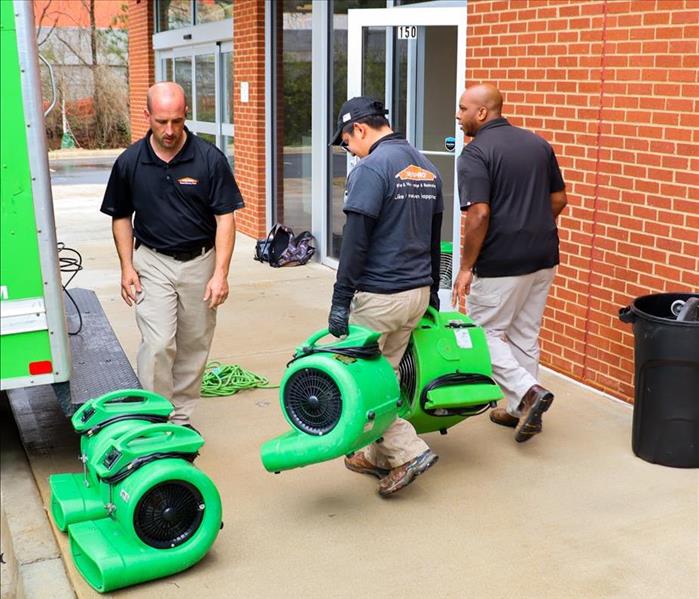 Our SERVPRO of Maury/Giles County technicians are ready to assist you at a moment's notice. Call today for immediate assistance!
Our SERVPRO of Maury/Giles County technicians are ready to assist you at a moment's notice. Call today for immediate assistance!
Water damage is both expensive and inconvenient, as SERVPRO of Maury/Giles Counties, your local water damage repair professional, knows all too well. In the long run, it will assist you avoid water damage and reduce your home maintenance expenses if you look after it properly. You're undoubtedly concerned if your home floods. You may significantly decrease the chance of water damage in your house by following these simple maintenance ideas.
2) Replace the old caulk around your windows to prevent water from getting in.
We get a lot of phone calls about window caulk water damage repair in Springhill, TN and the surrounding areas. Caulking your windows not only prevents water leaks but also improves the efficiency of your air conditioner while keeping the outside air out of your house. It's a simple operation that any homeowner can complete. Depending on the type, caulking can last anywhere from five to ten years; nevertheless, you should check your caulking every year and replace it if it begins to fracture or peel off the window.
Exterior door flashings should be inspected to see whether there are any tears or rust that would allow water in. Caulking the doors will also help prevent early door flashing failure.
2) Check for leaks in your water heater to avoid it from flooding and causing water damage.
When it comes to our emergency water cleanup services, heater failure is all too prevalent. Regularly maintaining your property may help you avoid a massive water heater flood. Make sure the temperature of the water heater's thermostat is set precisely and functioning properly to prevent pressure from developing, which may result in a leak.
Water heaters frequently develop rust or silt inside, resulting in undesirable tastes and odors in the water. If your water begins to make unusual noises, it's probably time for a checkup or a new water heater.
3) Immediately replace any leaking or damaged water hoses or connections on your plumbing appliances
Be on the lookout for any holes, kinks, fraying, deterioration, or corrosion on your plumbing's hoses and connections. If you detect any damage, have it repaired right away. In order to avoid pricey water damage expenses down the road, most manufacturers and plumbers recommend changing water hoses and connections every three to five years.
(5) Examine the roof and gutters for debris and any signs of moisture damage in the attic.
If the roof on your home does not drain properly, it may deteriorate. Water can seep into your property if this happens.
Look for dampness around vents, valleys, chimneys, pipes, and skylights. Any place on your roof with holes or connections is a potential source of leaks later on. If the flashing deteriorates as a result of weather, rusting, or losing its seal, water may flow into your house.
Check the inside of your attic for dampness or mold development. If you find moist, damaged, or moldy insulation, rotted or discolored boards or ceiling panels, or sheetrock puckering, you may have a leak on your hands.
6) Clean and inspect the HVAC condensation lines for any leaks or obstructions.
If your HVAC condensation lines become clogged, water leaks out and damages your home's surrounding areas. Check your condensation pipes on a monthly basis to ensure they're clear of debris.
Pour one-half cup of plain, white vinegar down the condensate drain once to four times a year to clear out blockages and grime. Bleach should not be used since it might harm your metal drain pan and cause it to degrade. If you detect an accumulation of debris or mold, our SERVPRO experts can assist you with any water damage.
We are Here to Help You with Any Water Repair Needs You May Have
If you have water damage in your house or workplace, call our team at SERVPRO of Maury/Giles Counties for immediate assistance.
Our courteous, well-experienced staff are always happy to answer any questions you might have. Save our phone number in case you need help again in the future, or contact us right away for a prompt response from one of our IICRC-trained water restoration specialists.
We are always Here to Help!
3 Steps To Take After Your Water Heater Breaks
2/10/2022 (Permalink)
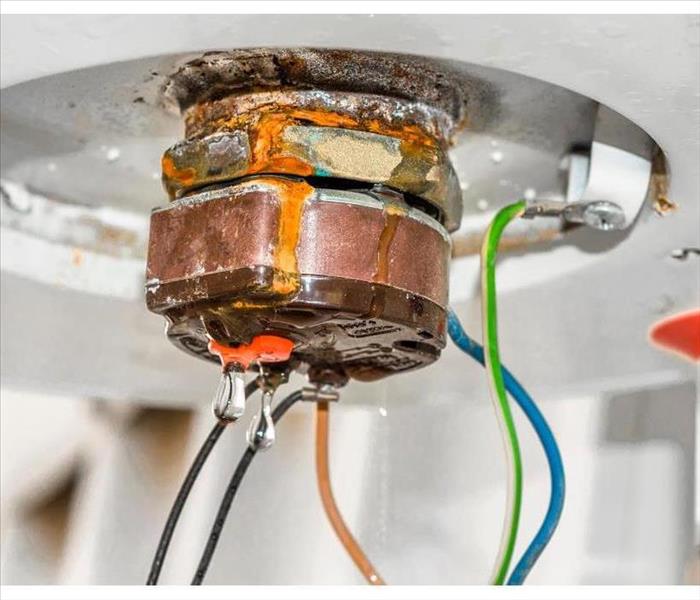 Water from your leaking water heater is classified as “category 1,” meaning it’s clean water.
Water from your leaking water heater is classified as “category 1,” meaning it’s clean water.
Steps To Deal With a Failed Water Heater
When faced with a leaking water heater, it can feel like a whirlwind of shock and confusion while you try to figure out what to do. Repairing water damage is costly, and you often have only a short amount of time to successfully protect your home and resolve the issue. Here are the first steps you need to take to deal with a failed water heater.
1. Shut Off the Main Water Supply
Shutting off the water as soon as possible ensures that no additional water floods your home. Otherwise, the water will just keep pouring in from the leaking water heater.
2. Call a Professional
If you are concerned about how much water impacted flooring and walls, it will be important to procure an expert’s help with water removal. Your local specialists in Pulaski, TN, will have the necessary insight and equipment to ensure that all water and hidden moisture from the broken water heater is safely removed, diminishing the risk of mold or rot from water damage.
3. Dry the Area
While you are waiting for your local water damage restoration professionals to arrive, you want to make sure you have no standing water ruining flooring and furniture, so do your best to dry the area thoroughly. This includes setting up industrial-sized fans, removing furniture and opening windows to encourage air flow.
4. Clean Where Necessary
Thankfully, water from your leaking water heater is classified as “category 1,” meaning it’s clean water. With category 1 floodwaters, there isn’t usually a pressing need to sanitize after a flooding situation. You’ll still want to clean and dry any affected furnishings to prevent black mold, but cleanup usually is less expensive overall.
In short, if your water heater malfunctions, shut off the water, call for backup and do what you can while you wait. By acting quickly and being prepared, you can set yourself up for a fast restoration process.
What To Do for a Flooded Toilet
12/23/2021 (Permalink)
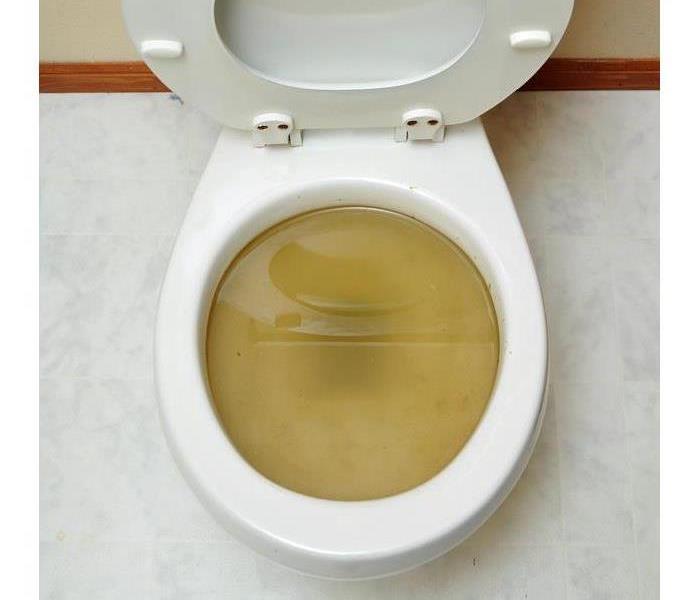 A flooded toilet can cause damage to your home in Pulaski, TN.
A flooded toilet can cause damage to your home in Pulaski, TN.
What to Do If Your Toilet Is Flooded
In busy Pulaski, TN, there are few more disruptive tasks than having to clean a toilet overflow at home. Bathroom-goers rarely plan for sewer damage when they enter the facilities, yet most will encounter a flooded toilet at some point in their lifetime. After the initial panic rests, here is what to do in the face of unexpected plumbing issues.
Cut Off the Water Supply
Regardless of where the problem is coming from or the extent of sewer damage, a solution will be difficult to find without first bringing flowing water to a halt. This can be done in one of three ways:
- Open the toilet tank and raise the floating cup. This action simulates a full tank and signals the system to stop flowing.
- Turn the toilet tap into an “off” position. The valve to do this is usually behind the toilet and below the tank.
- If all else fails, shut off the main water supply to the residence. The valve for this is normally in the basement.
Find and Fix the Problem
With water stopped and protective barriers in place, it is safe to explore the sewer damage to uncover a solution. A superficial clot can be remedied with a simple plunger or coil. Be sure to scoop excess water into a separate container before attempting to remove a clog with any tools. Plungers work to suck blockages out from the entrance of the bowl, while a coil can be inserted deeper into the toilet pipes to remove more stubborn roadblocks.
If the problem is still out of reach, it may be time to call in professionals. A water damage repair or sewage company is best equipped to handle severe or recurring cases of overflow, as this could indicate a more serious backup. Their professionals can perform a full plumbing assessment and take care to rid all mess and germs.
No matter when a flooded toilet occurs, a solution is within reach. Keep calm and follow the simple tips above to get back on dry land.
Why Does Mold Happen? Here are a Few Reasons
11/22/2021 (Permalink)
The key to mold control in Pulaski, TN is moisture control. Understanding how to control mold in your commercial building can help employees feel more comfortable in their work environment while preventing expensive repairs from mold and water damage. It's important to perform routine maintenance so you can pinpoint potential water entry issues and properly address them early before they have the chance to become a critical issue. This article will provide you with helpful knowledge necessary to understand why mold can happen in your commercial building in the first place.
Understanding Mold-Causing Condensation
Mold is everywhere and can't be completely eliminated. However, it requires moisture to thrive and spread. Knowing what can cause that condensation will help you pinpoint problem spots and solve them before they can become serious issues.
Condensation forms when warm air encounters a colder surface. Cold surfaces naturally occur with large temperature differences between the inside and the outside of a building. This naturally occurring event where water vapor moves through building materials from moist to dry air is called Diffusion.
Capillary Action, where small openings or pores in building materials allow water to wick upwards into the building, can be another source of water entry. This can be seen in materials like drywall, wood flooring, plywood, and other water-sensitive building materials.
Stack Effect is where moist air rises from a crawlspace or basement into the building's living spaces.
Another source of condensation or water damage can be forceful winds. When the wind combines with driving rain, water can seep into a commercial building or home through cracks and crevices that are normally unseen.
Proper ventilation, building design & maintenance, and a well-functioning AC system help prevent that condensation from becoming a mold-causing issue.
Common Sources of Moisture and Water Damage
The most common place you'll see condensation is on windows, especially if they are foggy or have water spots. Window condensation happens when cool outside air encounters warm indoor air near the window.
Air conditioning ducts are notorious for collecting moisture that then causes mold to grow inside them. The best thing to do to prevent AC issues is to establish a routine maintenance schedule to ensure proper functioning HVAC systems.
Vinyl Wallpaper can also often harbor mold behind it because of diffusion. If installed on outer walls that are more exposed to temperature differences, this issue is more likely to occur.
Condensation on cool metal surfaces such as copper pipes can be another common source of moisture and mold.
Failing building vapor barriers can be more serious moisture and mold-causing issues. When building foundations or walls are installed, usually vapor barriers such as 6mil plastic sheeting, house wrap, or primer paint are also installed to create waterproofing separation between the inside and outside of the building. If too many holes, ruptures, cracks, or damage occur to these vapor barriers, moisture entry is much more likely to occur.
While there are many potential causes for moisture and water damage to a home, getting rid of and preventing mold isn't just an aesthetic matter. That's why SERVPRO of Maury & Giles Counties uses advanced protocols to quickly locate, identify and remediate mold infestations in your home.
Call us today at (931) 388-4248 for rapid 24-hour assistance.
Avoiding Sprinkler Floods: Why Sprinkler Inspections Matter to Your Business
9/26/2021 (Permalink)
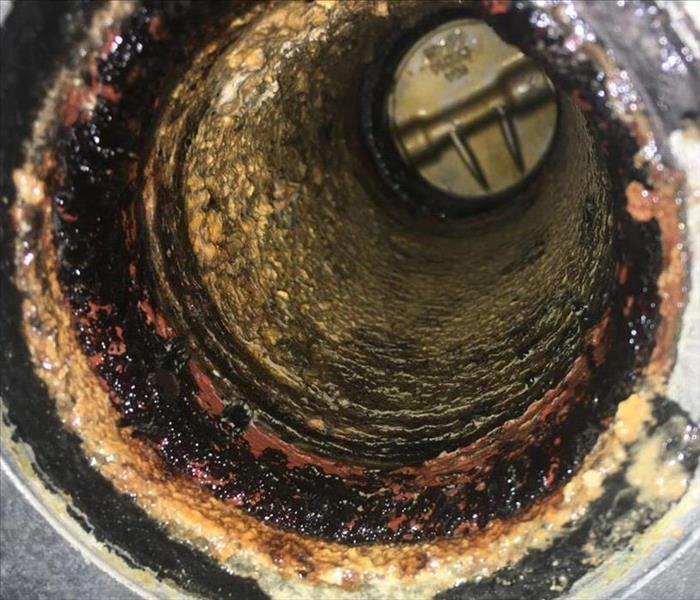 Irrigation maintenance is vital to the functionality of your sprinkler system.
Irrigation maintenance is vital to the functionality of your sprinkler system.
Sprinkler flooding can cost a business thousands, and if it happens to your business, the best option may be to look in the local Pulaski, TN, area for restoration specialists. However, you may be able to prevent the hassle by performing routine irrigation maintenance and avoiding the following irrigation pitfalls:
1. Avoid Broken or Misaligned Heads
One common cause of sprinkler flooding is a broken sprinkler head; however, the head does not have to be entirely wrecked to cause damage, it can merely be misaligned. Sprinklers end up broken and misaligned in any number of ways, lawnmowers being the most common, but one way to avoid this damage is to install sprinklers on a swing pipe so that they are suspended in the soil.
2. Avoid Costs of Leaky Seals
Another common cause of flooding occurs because of leaky seals. Wiper seals are not made to last forever, and after years of exposure to debris and possible collisions with lawn equipment, these seals wear away or fail. Left unchecked by irregular Irrigation maintenance, these seals can continue to drip costing businesses possibly thousands in wasted water.
3. Avoid Costs of Damaged Pipes
In addition to leaky seals, businesses should be aware of the potential costs from damaged pipes. As pipes are located underground, business owners should inspect the property for any pooling of water or unusual divots because these can be signs of leaks and damage in the lines. If not addressed, this can also cost the business thousands in water alone.
4. Avoid Clogs
While the costs associated with leaks may not be concern enough for businesses to begin biannual inspections of their irrigation systems, they shouldn’t underestimate the risks related to simple clogs. Left unchecked, a clog or blockage in the line can create a buildup of water pressure, possibly resulting in burst pipes and even complete system failure.
Irrigation maintenance is vital to the functionality of your sprinkler system because routine maintenance helps you avoid the common issues above while potentially saving you thousands in costly repairs later.
How To Make a Strong Water Damage Insurance Claim
8/23/2021 (Permalink)
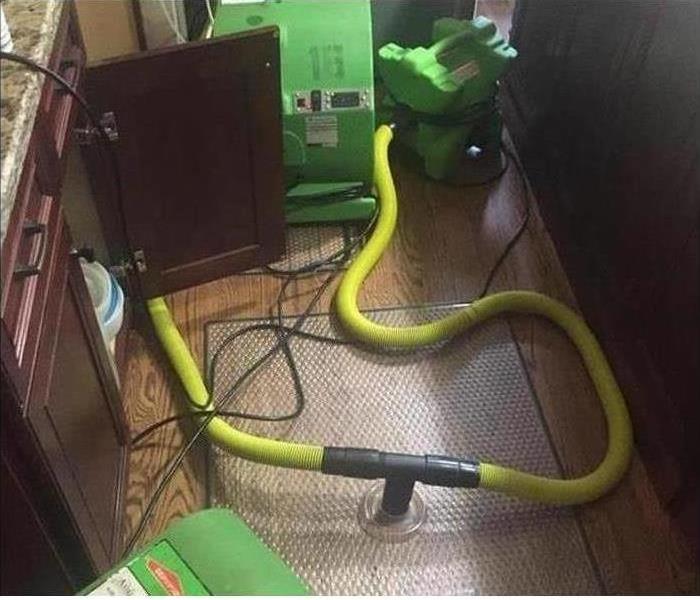 Water damage to a kitchen floor.
Water damage to a kitchen floor.
How to File a Successful Water Damage Insurance Claim
No matter the reason, water damage can be a costly problem for homeowners. While an insurance claim may not be the first thing on your mind while in the middle of a disaster in Lynnville, TN, there are steps you may want to take before you clean up the flood water to make sure you can make a solid insurance demand.
1. Insurance - If you have renter’s insurance or homeowner’s coverage, you need to determine if the damages are covered. Flooding due to factors completely out of your control are typically included. Flooding that results from a pipe burst when pipes are poorly maintained is generally not covered under an insurance policy. Therefore, present your claim with your best evidence.
2. Pictures - Photos of the affected area can be a solid statement to your insurance company. Taking pictures while the water is still standing, and then again once the water is removed, can help your insurance adjuster assess the incident. Calling in a restoration team to document the cleanup procedure can also help solidify your insurance claim.
3. Inventory - Once you have contacted the insurance company, and the restoration team has finished its cleanup, it is time to take an inventory of your personal property damage. When noting items, it is important to include the make, model, and function of each article. If you have time, list the replacement cost or value of each piece as well.
4. Settlement - When the adjuster visits the flood site, make sure you are there to answer any questions about the incident. After the insurance company offers a settlement, they often give you half the money in advance of the repairs. When you can show the repairs are completed, the other half of the money will typically be paid out.
Water damage can be costly in Lynnville, TN, and an insurance claim can take time. By being proactive, you can help make sure your claim is a strong one.v
What Sort of Noises Come From a Water Heating Unit?
6/28/2021 (Permalink)
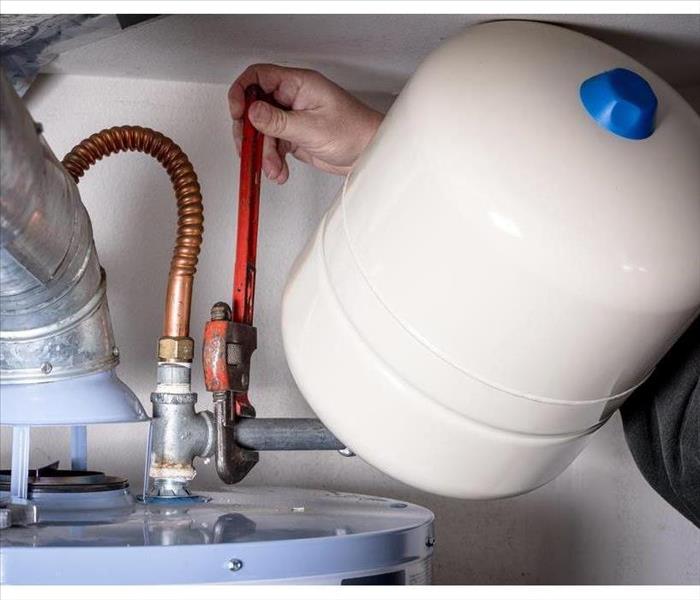 Schedule regular maintenance to your water heater.
Schedule regular maintenance to your water heater.
Is It Normal For Water Heater To Make Noise?
Houses can be full of a lot of strange noises. When you hear creaks and groans, you may wonder if the sounds are from your Columbia, TN, home settling, or larger issues with piping. Even your water heater can start to make some unseemly noises.
• Screeching: Have you been hearing a sound reminiscent of a scream? This could be a sign that a valve in your heater is not opened all the way. As the water flows through the smaller-than-normal opening, it creates a screeching sound.
• Humming: A loose heating element can start to vibrate as the water heats up around it. This problem can be addressed by tightening the element.
• Tapping: This noise is often harmless when it comes from your water heater. As the liquid inside starts to cool down, it may cause a tapping noise.
• Rumbling: Sediment buildup is common in older units. If you hear a rumbling, it could be a sign that some buildup is being stirred around in the unit. As the chunks hit the sides and heating elements, it causes a rumbling.
• Crackling: Sediment can also lead to a popping or crackling sound. When the buildup is caked onto the heating element, water may get trapped beneath the residue. As the water warms up, it is forced back through the residue with a loud popping noise. A regular water heater flush can help you avoid this noise.
• Knocking: Knocking in your pipes is usually associated with a change in water pressure. If a faucet is quickly turned off, the pipes may shake from the sudden change. As they shake, they may hit the walls in your home and cause you to hear a knocking sound.
Some noises that come from your water heater could be a sign of a problem. Because you want your heater to continue working for years to come, it may be beneficial for you to schedule a regular inspection with a residential water maintenance team.
4 Steps To Take After Water Damage
3/9/2021 (Permalink)
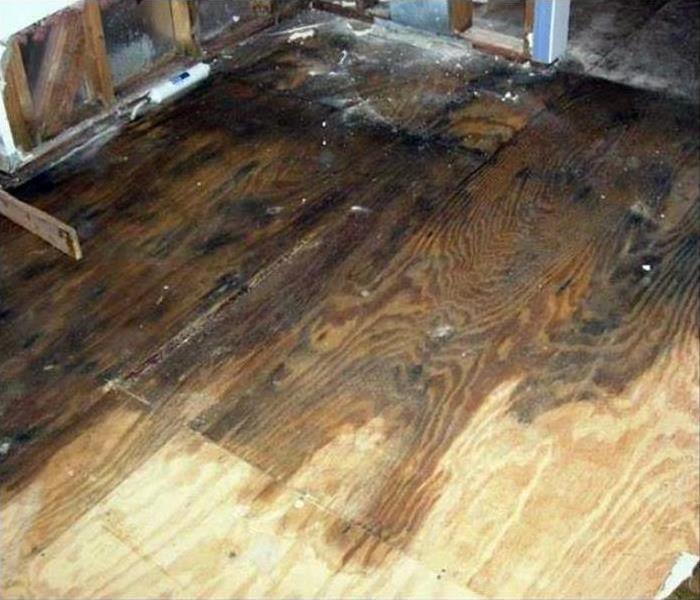 Water damage in Columbia, TN.
Water damage in Columbia, TN.
Take The Following Steps As Soon As Possible
The moments after bursting pipes have caused damage to a home are often filled with uncertainty. Individuals sometimes struggle with what steps to take to protect their property and to minimize expenses. As a general rule, it can help to concentrate on the most serious aspects of the crisis, and then to move on from there. After everyone in the home is safe, the following steps should be taken as soon as possible.
1. Stop the Flow of Water. To reduce water damage, it is important to find the nearest shut-off valve to stop the flow of water coming into the home. Once this is accomplished, the owner or renter of the property can move on to the next step.
2. Call in Restoration Professionals. The sooner a local water restoration team from Columbia, TN, can arrive, the quicker the cleanup process can begin. Trained professionals will arrive quickly with the expertise and equipment needed to remove standing water and take other critical actions. Whether bursting pipes or some other malfunction created the problem, certified technicians will follow a proven process of restoration.
3. Contact the Insurance Company. It is important for residents to know where they stand after significant property damage. A call to the insurance agent can provide important coverage information as well as how to file a claim. Costs to fix broken pipe and replace damaged items are often part of a person's homeowners or renters insurance policy. It makes sense at this time to document any repairs or expenses caused by leaking water.
4. Coordinate With the Cleanup Crew. A professional water cleanup crew will often be able to help with insurance claims by providing proper documentation. This takes some of the uncertainty out of dealing with complicated paperwork.
A professional SERVPRO franchise is always Here to Help. This is true when it comes to dealing with bursting pipes or the efficient handling of an insurance claim.
5 Types of Leaks That Are Causing Your Water Bill To Spike
2/11/2021 (Permalink)
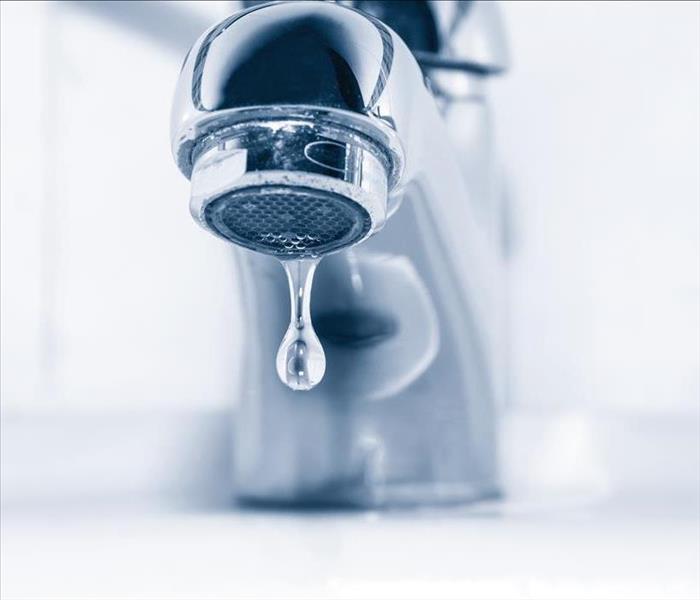 A leaky faucet can cost you a lot of money.
A leaky faucet can cost you a lot of money.
Five Ways A Water Leak Can Be Causing A Spike In Your Water Bill
You've noticed that your water bill, which is usually pretty stable, has suddenly spiked and keeps climbing. You haven’t hired a ton of new employees, and you haven't done anything different with the irrigation schedule, so what gives?
1. Outdated Fixtures
If you bought an older building and didn't replace the toilets or faucets, one of these could be the problem. Older fixtures are less efficient and usually mean older pipes, so a sudden climb in your water bill could mean that the pipes are blocked or that there is a water leak.
2. Problematic Irrigation
An irrigation system is a time-saver, but it can be costly when it breaks. Check for a pipe break or a faucet head that is cracked. If your system is buried, look for unusually soggy patches of ground.
3. Running Toilets
A running toilet can waste thousands of gallons of water and drive your bill sky high. It's easy to check to see if a toilet is running and is often a pretty easy fix. However, if you have a running toilet that is outdated and the hardware store fix didn't make a difference, you may benefit from calling a water damage specialist to investigate whether a pipe break or a leak is contributing to the problem.
4. Leaky Faucets
Similar to running toilets, a leaky faucet can cost you a lot of money. Even little drips add up and often continue to get worse until the actual faucet is fixed.
5. Cracked Lateral Line
The costliest possibility is that there is a cracked lateral line (the line that feeds water into your business). That means the water is leaking out before it gets to you. If you're suspicious that this is the problem, contact a professional for an assessment.
A water leak from a pipe, a running toilet, or a cracked irrigation line can drive up your water bills. When you have unexplained water costs, investigate promptly to save your business money and resources.
Does a Leaking Toilet Always Require Replacement?
12/28/2020 (Permalink)
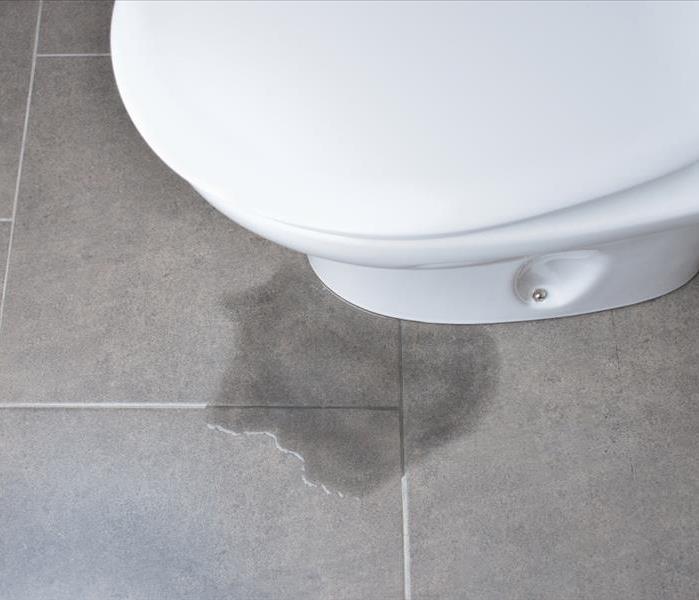 Does a leaking toilet require replacement?
Does a leaking toilet require replacement?
Does a Leaking Toilet Always Require Replacement?
When a chronically leaking toilet becomes a problem in your home in Columbia, TN, you may need a new fixture. If your toilet leaks uncontrollably, you risk the spread of bacteria and mold throughout your home. It is critical to take action to minimize the damage from a flood:
- Turn off the water supply
- Begin water extraction
- Sanitize your space
Sometimes a minor repair of an old toilet can address a leak and prevent damage.
Base Ring Replacement
A toilet's porcelain base hides the floor hole through which the waste pipe runs. A wax ring around the hole prevents water from overflowing as it passes through the pipe. The porcelain base can loosen and press against the ring, tearing the wax and causing a leak when the toilet flushes. Sometimes, the wax naturally deteriorates over time. Replacing this critical part by first removing the entire unit from its foundation might extend your fixture's life.
Tank Flapper Replacement
The toilet flapper opens upon flushing to facilitate water movement through the pipe connecting the tank and the bowl. After each flush, the flapper seals the opening that leads the water into the bowl. The flapper can wear out and provide an insufficient seal causing a leaking toilet. A new part may be enough to solve the problem.
Loose Bolts Tightening
The bolts that fix your toilet to the floor can loosen over time and cause water to leak from beneath the porcelain base. Tightening the bolts with a wrench involves removing the plastic caps that cover them. Bolts that do not tighten usually have corrosion and require replacement.
When a slowly leaking toilet leaves you wondering if you need a new fixture, consider that you might solve the problem with a minor toilet repair. A flooding toilet that contaminates your home may require the services of a professional cleaning and restoration company.
3 Flood Prevention System To Check Before You Leave for Vacation
11/24/2020 (Permalink)
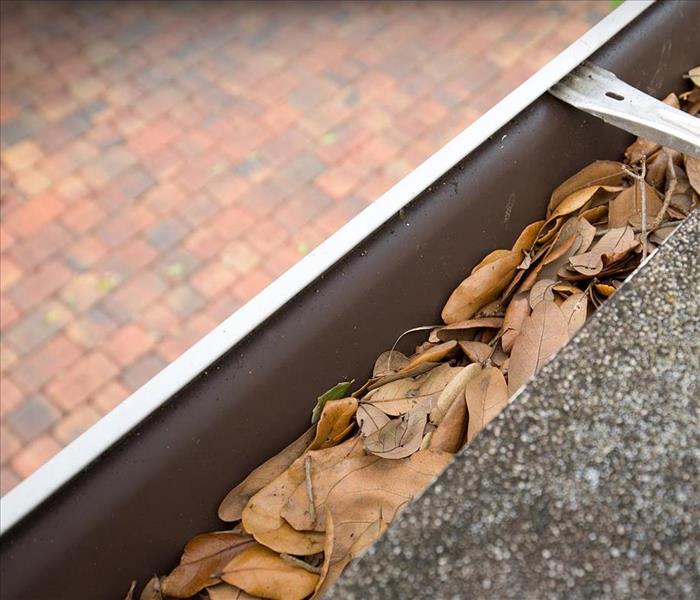 Always clean your gutters
Always clean your gutters
3 Flood Prevention System To Check Before You Leave for Vacation
Leaving your Columbia, TN, home for a vacation is always an exciting venture, but it can be important to make a checklist of actions you can take to protect your home while you are away. Preventing water damage can be especially essential, as emergency water pipe repair is often costly. Before you leave for your trip, there are a few flood prevention systems in your home you may want to have inspected to ensure it is well protected while you are gone.
1. Gutters
Your home’s gutters channel rainwater and melted snow from your roof and away from your property. When they are clogged with dead leaves and other debris, the water may overflow close to your home’s foundation and eventually seep into your basement. This could result in a flooded basement during especially powerful storms, so having the gutters inspected and cleaned before you leave for vacation could help defend your home from water damage.
2. Plumbing
A broken pipe in your kitchen or bathroom could cause major flooding, especially if it happens soon after you leave. Inspecting leaky sinks for the source of the drip and checking valves and elbow joints for signs of wear or damage can prevent this problem, as well as expensive water pipe repair bills.
3. Sump Pump
Your home’s sump pump is designed to collect and eject standing water from the basement in case of a flood, so ensuring it is in good working order before you leave can help protect your home from serious water damage. Call in a flood mitigation and restoration service to clean and inspect the pump may give you peace of mind during your absence. Ask your flood technicians about installing a backup power source for your pump in case of a blackout caused by electrical storms.
Returning from vacation to find your home flooded can taint any fond memories of your trip. However, you can avoid the need for water pipe repair and other services for your Columbia, TN, home by having flood support systems inspected before you leave.
How To Stop Noisy Pipes in Your Home
10/14/2020 (Permalink)
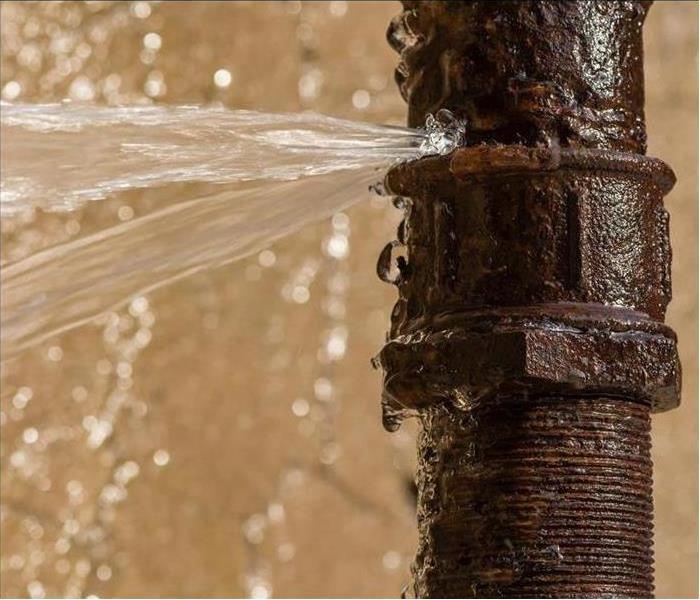 If a pipe does burst, however, you can contact restoration and cleanup specialists
If a pipe does burst, however, you can contact restoration and cleanup specialists
Common Causes of Noisy Pipes
Do you hear a squeal or bang coming from behind your walls? Then you may have an issue with your pipes. If you ignore the problem, you could end up with a major pipe break. Below are some common causes of noisy pipes and tips for addressing them.
Water Hammer
Water hammer is a banging or chattering sound that occurs when the flow of the fluid suddenly stops inside your pipes. The water's momentum causes it to bang against the inside of the fittings and the side of the pipes. Over time, this could lead to a pipe burst.
If you continuously hear this hammering sound, try inspecting all of your pipes. The flowing and stopping water may cause the elbow fittings or T-fittings to vibrate and bang against your wooden walls. You may be able to solve this problem and prevent a pipe break by putting a rubber pad between the wood and the pipe. Otherwise, you can install one of the following types of air chambers:
- Vertical pipe
- Globe- or ball-shaped chamber
- Spiral coil of copper tubing
Whistling
Whistling is the other common pipe noise. This is a sign that water is quickly flowing through an obstruction in the pipes. Usually, this indicates a problem with the washer or brass screw within a faucet or valve.
To figure out which faucet is causing the issue, turn all of them off and run each one individually. Once you find out from where the noise is coming, you can replace the screw and washer for that faucet.
Your toilet could also be the source of a whistling noise. If this is the case, you probably just need to repair or replace the ballcock valve.
By following the above steps, you can reduce the chances of a pipe break flooding your Columbia, TN, home. If a pipe does burst, however, you can contact restoration and cleanup specialists. They do not just fix a broken pipe. They also dry your belongings and mitigate future damage.
5 Water Damage Tips for Your Commercial Property
8/19/2020 (Permalink)
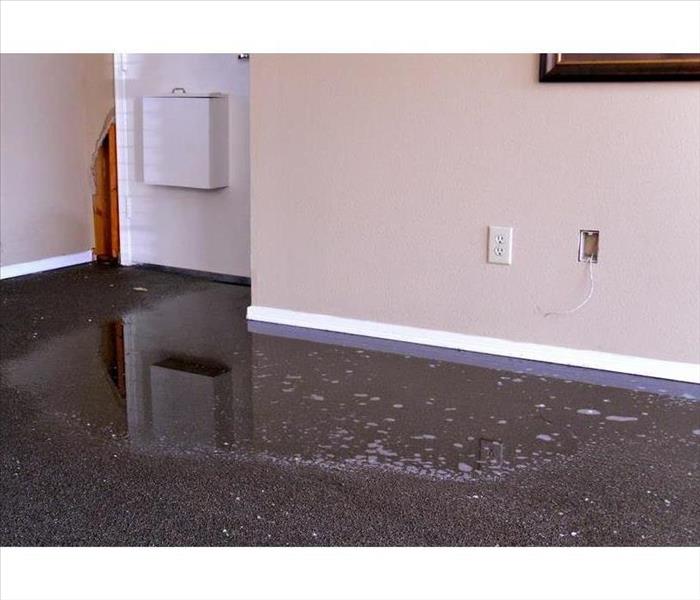 Wet carpet in a commercial building
Wet carpet in a commercial building
Five Tips For Handling A Water Emergency
Water damage from natural disasters or other events can quickly turn your business upside-down. Your business suffers financially from damage and lost productivity. While no one likes to think about these types of events, damage can be minimized if individuals know how to handle the situation. Here are five tips for handling a water emergency.
1. Assess the Situation
Whether your Spring Hill, TN, business was hit by a hurricane or broken pipes, the first step is to ensure that all individuals are safe. Electrical and slip hazards are common during any type of water event. Before you or any individual attempts to manage a water problem, ensure that it’s safe to stay in the building.
2. Remove Excess Water
Once you’ve determined it’s safe to stay inside, the next step is to remove excess water by mopping or using a wet-dry vacuum. Do not use a regular household vacuum to extract the water. You can also try to remove water from wood furniture, desks, and other non-electrical items.
3. Remove Wet Rugs and Furniture
The third tip for water cleanup involves removing rugs and furniture. Cushions, rugs, chairs, lamps, artwork, and loose items on the floor should be removed to help minimize water damage. If the furniture cannot be removed from the building, place blocks between the legs of the furniture and the floor.
4. Don’t Use Electronics and Appliances
Computers, tablets, copy machines, televisions and any other electronics should not be used during a water emergency. Make sure all individuals know that it’s unsafe to handle electronics in standing water.
5. Don’t Leave Wet Items in Place
Rugs, books, and colored items are especially damaging during a water event. If possible, remove all wet items off the floor in order to minimize water damage and potential mold.
One of the best things you can do during a water emergency is to contact a water restoration company. They can help with water cleanup and restore your business in a safe and timely manner.
3 Tips for Dealing With Crawl Space Water
6/2/2020 (Permalink)
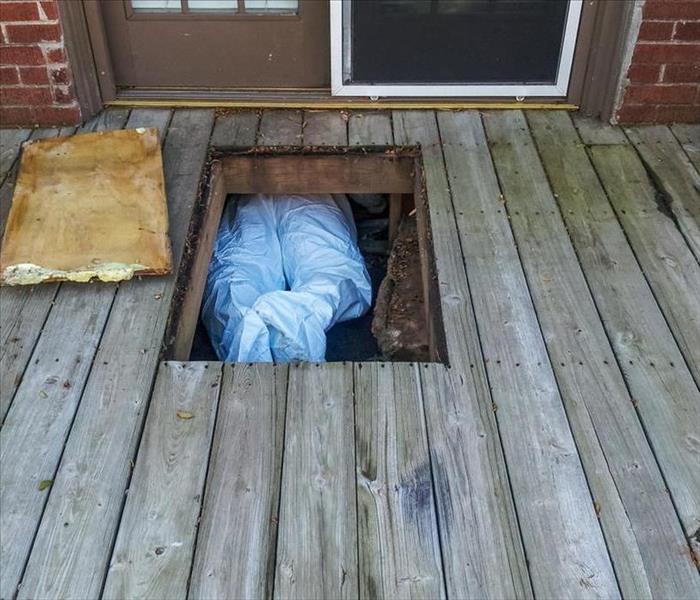 When you have a wet crawl space it’s best to conduct a cleanup as quickly as possible
When you have a wet crawl space it’s best to conduct a cleanup as quickly as possible
Here Are Three Tips That Might Help
If your Lynnville, TN, home has a wet crawl space you may be worried about water damage from the flooding. One of the best ways to deal with this is to clean up the space as quickly as possible. Here are three tips that may help.
1. Call a Professional
One of the first steps to follow with any water problems is to contact a water damage restoration service. These professionals have the tools and training needed to remove the water from your crawlspace, clean the area, and make any necessary repairs. Many restoration professionals also have the ability to work with your insurance in case a claim needs to be documented.
2. Remove the Water
A wet crawl space can experience a number of additional problems such as mold or the warping of wood, so it’s important to remove any excess water from space as quickly as possible. A restoration service will often have pumps or water-rated vacuum to pull large amounts of water out of the area. You can also make use of absorbent rags. Once the water is gone the area can then be dried.
3. Dry the Space
It's important after the floodwater is removed to thoroughly dry the area. If Possible a dehumidifier can be used to help pull moisture from the air. After the area is dry it will be easier to make any necessary repairs and set up mitigation measures against future flooding. Drying the space can help prevent possible problems like mold or warped wood as well.
When you have a wet crawl space it’s best to conduct a cleanup as quickly as possible. A restoration service should be able to help. Start by removing the water and thoroughly drying the area. After these repairs can begin and mitigation steps against future problems can be made. If you have any questions a professional can help.
Should I Replace My Polybutylene Pipes?
5/14/2020 (Permalink)
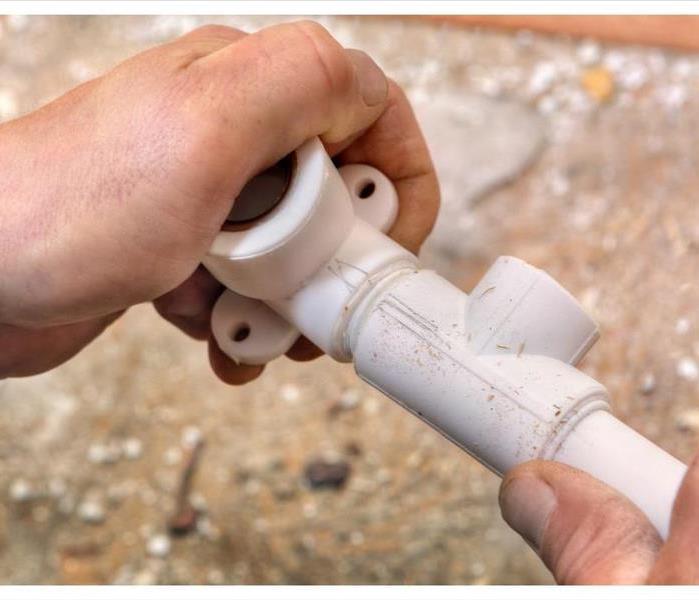 From around 1970 until the 1990s, polybutylene pipes were installed in millions of commercial buildings
From around 1970 until the 1990s, polybutylene pipes were installed in millions of commercial buildings
If your building in Pulaski, TN is more than 20 years old, you need to have the plumbing inspected. From around 1970 until the 1990s, polybutylene pipes were installed in millions of commercial buildings. This type of plumbing was fairly inexpensive and installation was quick and easy, so it was an attractive choice for many business owners. Unfortunately, these pipes have proven to be inadequate and new plumbing must be installed.
What Are the Problems With Poly Pipes?
Water treatments, including anti-bacterial and chlorine, negatively react with the polybutylene, causing the pipes to become brittle and crack over time. Because the deterioration takes place inside the pipes, it is hard to detect until a serious problem occurs. The resulting water damage is much more expensive than the cost of replacing the pipes.
Other situations that have contributed to the poor quality of the pipes over the years include:
- Inadequate plumbing installation
- Equipment used during installation wasn’t calibrated correctly
- Pipe fittings degenerate quickly
The poor condition of the pipes not only increases the risk of flooding, but it also affects the quality of the water that flows through the pipes. This can pose a health risk to your employees. For these reasons, the building codes in the United States and Canada don’t recognize these pipes any longer. It may be nearly impossible for insurance to cover water damage caused by faulty pipes as well.
How Can You Tell if You Have Poly Pipes?
If your building was constructed in the 1970s through the 1990s, chances are high that you have these inadequate pipes. You should call a professional to inspect the plumbing as soon as possible. He or she will be able to give you the best advice to remedy the situation.
Installing new plumbing may seem too expensive, but the price of not replacing the polybutylene pipes will eventually be much more costly.
Reducing and Assessing Damage from Kitchen Water Disaster
2/20/2020 (Permalink)
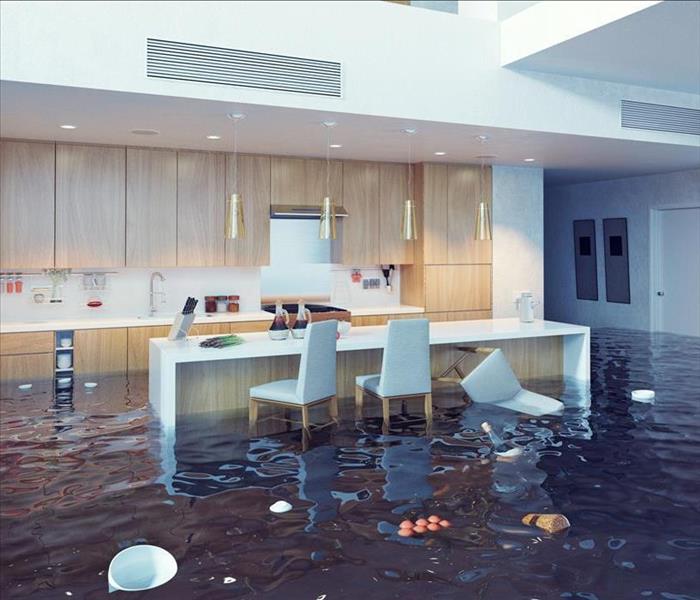 Flooded kitchen in Spring Hill, TN
Flooded kitchen in Spring Hill, TN
After a Kitchen Flood Take The Following Five Actions
When most people think of flooding in their homes, they think of basements and bathrooms, but kitchens are also contenders when it comes to water damage. While plumbing may be limited in the kitchen, broken lines, pipes or appliances can lead to significant damage. Therefore, if you come home to a kitchen flood, then take the following five actions.
- Shut off water
- Call for help
- Call insurance company
- Dry surfaces
- Repair plumbing and damage
Shut Off Water
The first thing you need to do when you find water in home is shut off the supply. If your issue is stemming from the sink or dishwasher, then the shutoff valve is likely found under the sink. However, if it's coming from a refrigerator, then the supply may be located behind the appliance. If you are not sure where to find the supply, then turn off the main water line in the home.
Call For Help
If the damage is extensive, then call a water mitigation company in Spring Hill, TN. These businesses often have quick response times, usually within 15 to 20 minutes. A team will arrive at your house and assess the damage, coming up with a recovery plan for your approval.
Call Insurance Company
Next, if the flooding was significant, then you should call your insurance company to file a claim and get assistance paying for any repairs. However, if the damage is minimal, then it is possible to clean up the mess without risking your premiums.
Dry Surfaces
If you hired a remediation company, then they will begin drying the affected area. Also, once the space is clear of excess water, the company will typically set up dehumidifiers and air movers to dry the space thoroughly.
Repair Plumbing and Damage
Last, the company will perform the necessary kitchen repair. The restoration also includes the removal and repair of any extensive water damage.
While in-home flooding typically occurs in basements and bathrooms, kitchens are also susceptible. Therefore, know the steps above, so you are prepared if you ever face a kitchen flood.
 Hygrometers and Protimeters are important tools that our SERVPRO technicians use to restore water damage here in Maury County, TN.
Hygrometers and Protimeters are important tools that our SERVPRO technicians use to restore water damage here in Maury County, TN.


 24/7 Emergency Service
24/7 Emergency Service



